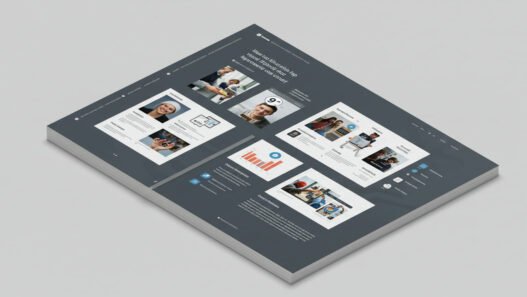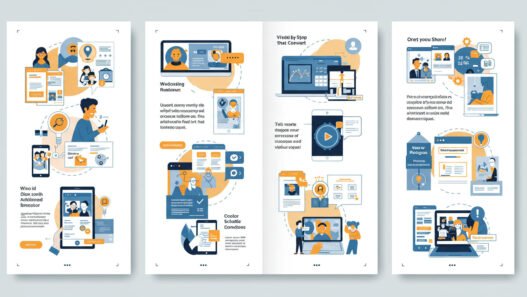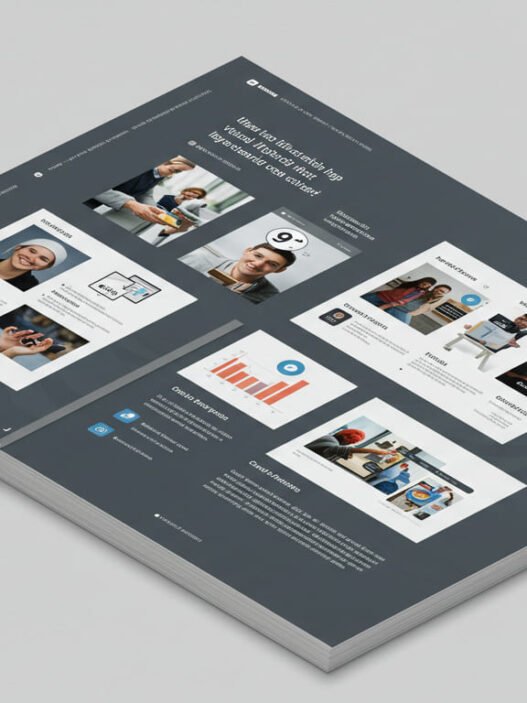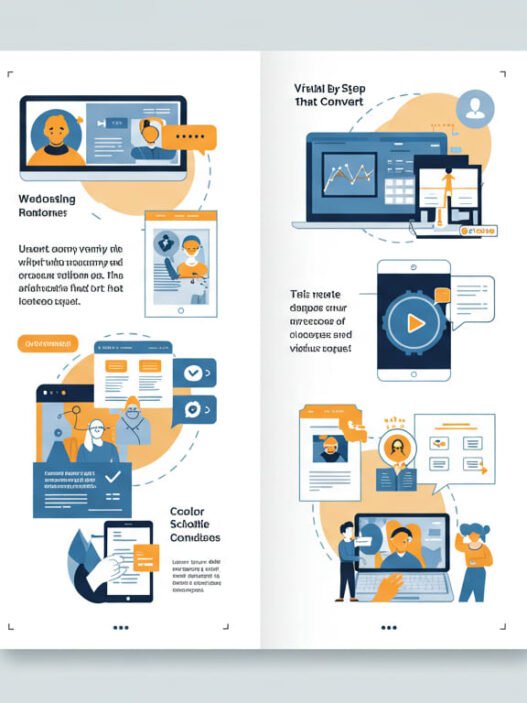How to Get Started with Data Analytics from Scratch
The cursor blinks in the search bar as you type “email analytics tutorial,” hoping to find a magic bullet that will transform you from data-confused to data-confident overnight. Your inbox is filled with marketing emails from brands that seem to effortlessly create compelling campaigns, while your own efforts feel like shots in the dark. You know that successful marketers talk about “leveraging data insights” and “optimizing based on analytics,” but when you look at your own email dashboard, those colorful charts and percentage breakdowns might as well be written in ancient hieroglyphics. The gap between knowing that data is important and actually using it to improve your email content feels impossibly wide, especially when every “beginner’s guide” assumes you already understand concepts that nobody has ever properly explained.
Here’s the truth that most analytics guides won’t tell you: you don’t need to become a data scientist to dramatically improve your email marketing results through analytics. The brands achieving exceptional email performance aren’t necessarily using complex statistical models or advanced machine learning algorithms. Instead, they’ve mastered the art of asking the right questions about their data, focusing on metrics that actually matter for their business goals, and systematically testing simple hypotheses about their audience behavior. Getting started with email analytics is less about technical expertise and more about developing analytical thinking—the ability to see patterns, form logical hypotheses, and make systematic improvements to your email content based on what your subscribers are actually telling you through their behavior.
Setting Up Your Analytics Foundation
Before diving into complex analysis, you need to establish a solid foundation for collecting and organizing email data that will actually be useful for improving your campaigns. This isn’t about implementing every possible tracking system immediately—it’s about starting with the essential measurements that provide actionable insights while building toward more sophisticated analysis over time.
The first crucial step is ensuring accurate data collection across all your email campaigns. Many beginners focus on vanity metrics like total subscriber count while missing fundamental tracking setup that would provide genuine strategic value. Your email platform should track basic engagement metrics consistently, but the real power comes from connecting email performance to website behavior and business outcomes through proper integration and tracking parameters.
Google Analytics integration represents the most valuable early investment in email analytics because it reveals what happens after subscribers click through from your emails. Setting up UTM parameters for email campaigns allows you to track which emails drive website traffic, how that traffic behaves differently from other sources, and whether email visitors actually complete desired actions like purchases or sign-ups. This connection between email engagement and business results transforms abstract metrics into strategic insights about email content effectiveness.
Mailchimp’s analytics setup exemplifies this foundational approach. Rather than overwhelming users with dozens of metrics immediately, they focus on helping marketers understand the relationship between email engagement and subscriber behavior over time. Their beginner-friendly dashboard highlights the most actionable metrics while providing clear explanations of what each measurement means and why it matters for campaign improvement.
Customer relationship management (CRM) integration, even basic setup, provides crucial context for email analytics by connecting subscriber engagement to broader customer lifecycle data. Understanding whether your most engaged email subscribers are also your best customers, or whether certain types of email content correlate with higher customer lifetime value, transforms email analytics from campaign-level optimization to strategic business intelligence.
The key principle for analytics foundation building is starting simple but starting systematically. Rather than trying to track everything immediately, focus on establishing consistent measurement practices for the metrics that most directly connect to your business goals. This might mean starting with open rates, click-through rates, and conversion tracking while gradually adding more sophisticated measurements as your analytical skills develop.
Understanding Your Baseline Performance
Effective email analytics begins with establishing clear baselines for your current performance across key metrics, but understanding these baselines requires more context than simple industry benchmark comparisons. Your baseline should reflect your specific audience, business model, and email program maturity rather than generic averages that might not apply to your situation.
Creating meaningful performance baselines requires examining your metrics across different timeframes, subscriber segments, and campaign types. A single campaign’s performance might reflect temporary factors like holidays, news events, or technical issues rather than typical audience behavior. Understanding your normal ranges for key metrics provides the context needed to identify meaningful changes and optimization opportunities.
Seasonal pattern analysis reveals crucial baseline insights that many beginners overlook. Your audience might show predictable engagement variations throughout the year based on industry cycles, holiday patterns, or lifestyle factors. Understanding these seasonal baselines prevents you from making unnecessary changes during naturally low-engagement periods while helping you capitalize on high-engagement opportunities.
ConvertKit’s approach to baseline establishment helps users understand their performance within proper context rather than panicking about temporary metric fluctuations. Their analytics dashboard shows performance trends over time alongside current campaign results, making it easier to identify whether changes represent meaningful shifts or normal variation within established patterns.
Subscriber lifecycle baselines provide particularly valuable insights for email content optimization. New subscribers often show different engagement patterns than long-term subscribers, and understanding these differences helps set realistic expectations while identifying lifecycle-specific optimization opportunities. Some metrics naturally decline over time as subscriber lists mature, and understanding these patterns prevents unnecessary optimization efforts focused on irreversible trends.
The most useful baselines combine multiple metrics to create comprehensive pictures of email program health rather than focusing on individual measurements in isolation. Understanding the relationships between open rates, click-through rates, conversion rates, and unsubscribe rates provides insights about overall subscriber satisfaction and content effectiveness that single metrics cannot reveal.
Choosing the Right Metrics to Focus On
The biggest mistake beginners make in email analytics is trying to track everything instead of focusing on metrics that actually influence their specific business goals. Different businesses need different analytical approaches, and effective analytics focuses attention on measurements that provide actionable insights for your particular situation rather than comprehensive data collection for its own sake.
Primary conversion metrics should align directly with your business objectives and revenue generation model. E-commerce businesses might prioritize revenue per email and purchase conversion rates, while B2B companies might focus on lead generation metrics and sales pipeline influence. Service-based businesses might emphasize consultation bookings or resource download rates. Understanding your primary business objective clarifies which email content metrics deserve the most analytical attention.
Engagement quality metrics often provide more strategic value than simple engagement volume measurements. Rather than just tracking total clicks, analyzing which types of content generate the most engaged website visitors, longest session durations, or highest conversion rates reveals insights about email content effectiveness that click-through rates alone cannot provide.
HubSpot’s metric prioritization framework helps marketers focus on measurements that actually influence business outcomes rather than getting distracted by impressive-looking but ultimately meaningless statistics. Their approach emphasizes tracking metrics that connect email performance to sales pipeline development and customer lifetime value, providing insights that inform strategic decisions rather than just campaign tactics.
List health metrics deserve particular attention from beginners because subscriber list quality fundamentally influences all other email analytics. Understanding your organic growth rates, engagement retention patterns, and churn characteristics provides crucial context for interpreting campaign performance metrics and identifying systematic improvement opportunities.
The most effective metric selection strategies start with business objectives and work backward to identify email measurements that correlate with those objectives. This business-first approach ensures that your analytical efforts focus on insights that actually matter for your success rather than interesting but ultimately irrelevant data points.
Simple Analysis Techniques for Beginners
Effective email analytics doesn’t require advanced statistical knowledge, but it does require systematic approaches to examining your data that reveal actionable insights about subscriber behavior and email content performance. Simple analysis techniques, applied consistently, often provide more strategic value than complex analysis applied sporadically.
Trend analysis represents the most accessible and valuable analytical technique for beginners. Rather than focusing on individual campaign performance, trend analysis examines how key metrics change over time, revealing patterns that suggest strategic opportunities or emerging problems. Consistent downward trends might indicate content fatigue or list quality issues, while upward trends might reveal successful strategies worth replicating.
Comparative analysis helps identify the factors that differentiate high-performing campaigns from average ones by systematically comparing successful email content against less successful efforts. This might involve comparing subject line approaches, content formats, send timing, or audience segments to understand which variables most significantly influence engagement and conversion rates.
Spotify’s beginner-friendly analytics approach focuses on helping users identify their most successful content patterns through simple comparative analysis. Rather than requiring complex statistical knowledge, their dashboard highlights correlations between content characteristics and engagement metrics, making it easy to identify strategies worth testing and optimizing.
Segmentation analysis reveals whether different subscriber groups respond differently to your email content, providing optimization opportunities that aggregate metrics often obscure. Even basic segmentation by subscriber source, geographic location, or engagement history can reveal significant performance differences that suggest targeted content strategies.
Time-based analysis examines how subscriber behavior varies across different sending times, days of the week, or seasonal periods. This analysis often reveals optimization opportunities that require no changes to email content—just better timing alignment with subscriber preferences and behaviors.
The key to successful beginner analysis is asking specific, testable questions about your data rather than just reviewing metrics without clear objectives. Questions like “Which subject line approaches generate the highest open rates?” or “Do subscribers from different sources show different conversion patterns?” provide analytical focus that transforms data review into strategic insight development.
Tools and Platforms for Beginners
Choosing the right analytics tools as a beginner requires balancing functionality with usability, focusing on platforms that provide essential insights without overwhelming complexity. The best beginner tools prioritize clear data presentation and actionable recommendations over comprehensive feature sets that require advanced expertise to navigate effectively.
Most email marketing platforms include built-in analytics that provide sufficient insights for beginning optimization efforts. Mailchimp, ConvertKit, and Constant Contact offer beginner-friendly dashboards that highlight key metrics while providing educational context about what those metrics mean and how to improve them. Starting with platform-native analytics allows you to develop analytical skills before investing in additional tools.
Google Analytics represents the most valuable free tool for connecting email performance to website behavior and business outcomes. While initially intimidating, Google Analytics provides crucial insights about what happens after subscribers click through from your emails, revealing whether email traffic actually converts at higher rates than other sources and which email content drives the most valuable website engagement.
Spreadsheet analysis using Google Sheets or Excel provides powerful analytical capabilities without requiring expensive specialized software. Simple spreadsheet techniques like pivot tables, trend charts, and comparative analysis can reveal significant insights about campaign performance patterns and optimization opportunities.
Hotjar or similar heat mapping tools can provide valuable insights about how subscribers interact with your actual email content, showing which sections receive the most attention and which elements subscribers ignore. While not essential for beginners, these tools can provide helpful feedback about content layout and design effectiveness.
The most important principle for tool selection is starting simple and adding complexity gradually as your analytical skills develop. Rather than investing in comprehensive analytics suites immediately, focus on mastering basic analysis using accessible tools before progressing to more sophisticated platforms.
Creating Your First Analytics Reports
Effective analytics reporting transforms raw data into strategic insights that guide email content improvement decisions. Beginning analytics reports should focus on clarity and actionability rather than comprehensive data presentation, highlighting the insights that most directly inform campaign optimization efforts.
Performance summary reports provide essential context for individual campaign results by showing current performance within historical trends and established baselines. Rather than just reporting that your latest campaign achieved a 23% open rate, effective reports explain whether that represents improvement, decline, or normal variation within your typical performance range.
Campaign comparison reports identify the factors that differentiate your most successful email content from average performers, providing specific insights about replicable strategies and optimization opportunities. These comparisons might examine subject line approaches, content formats, send timing, or audience targeting to understand which variables most significantly influence campaign success.
BuzzFeed’s internal reporting approach focuses on identifying content patterns and audience insights that inform future strategy rather than just documenting past performance. Their reports highlight correlations between content characteristics and engagement metrics, providing actionable guidance for content creation and campaign optimization.
Subscriber lifecycle reports track how email engagement patterns change over time for different subscriber groups, revealing optimization opportunities for onboarding sequences, content mix, and retention strategies. Understanding how new subscribers typically behave compared to long-term subscribers helps optimize email content strategies for different relationship stages.
The most valuable beginner reports combine quantitative performance data with qualitative insights about what the data suggests for future strategy. Rather than just presenting metrics, effective reports interpret those metrics within business context and provide specific recommendations for optimization testing and strategy adjustment.






















